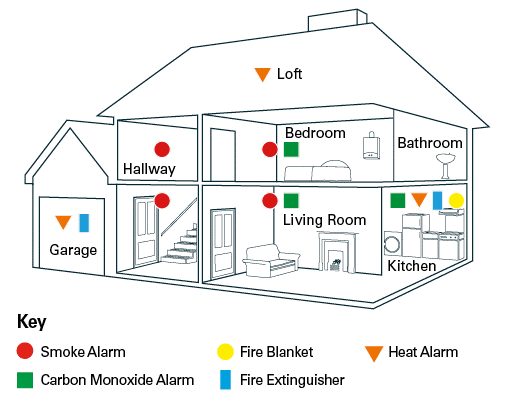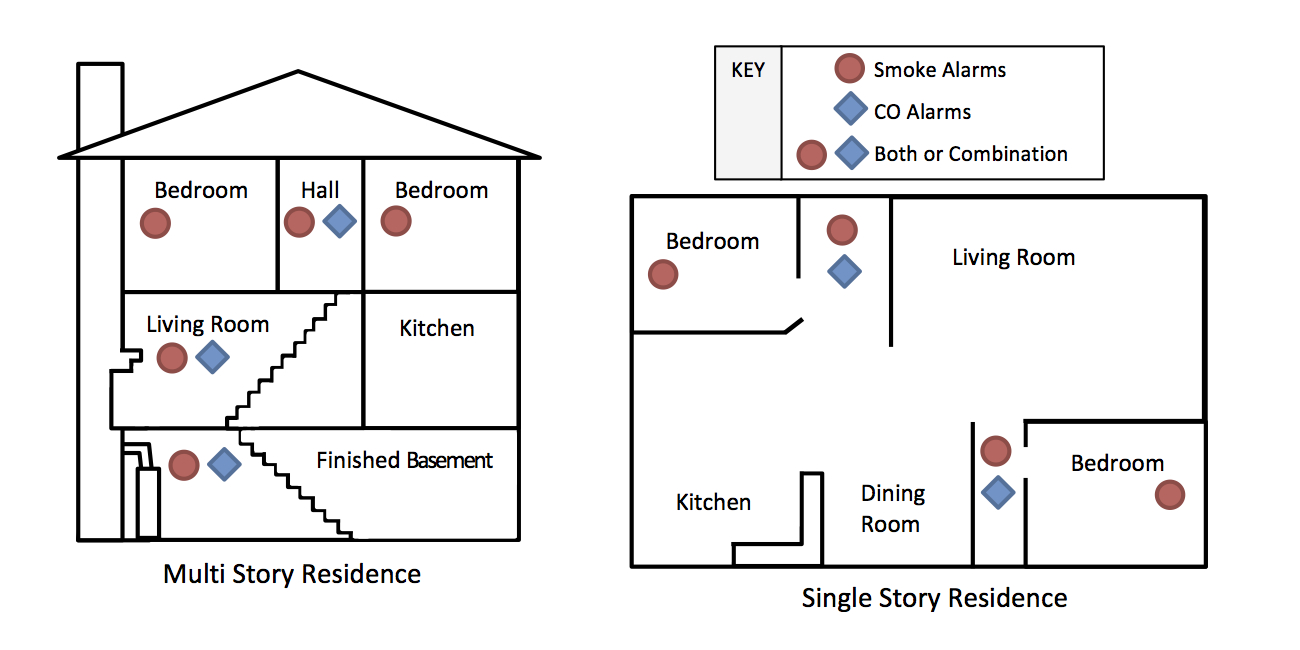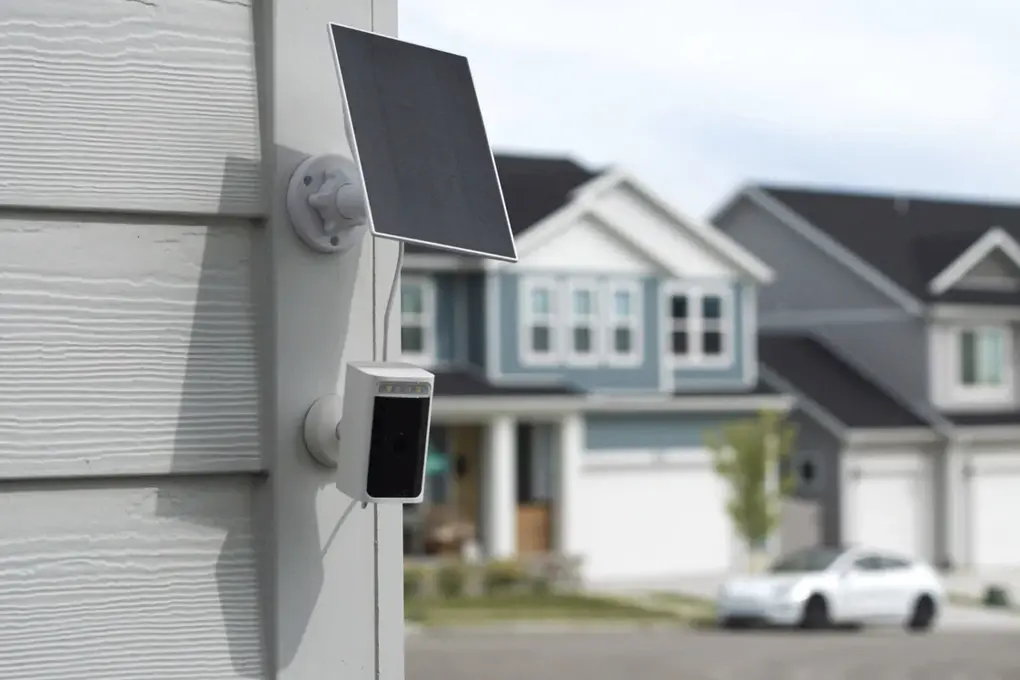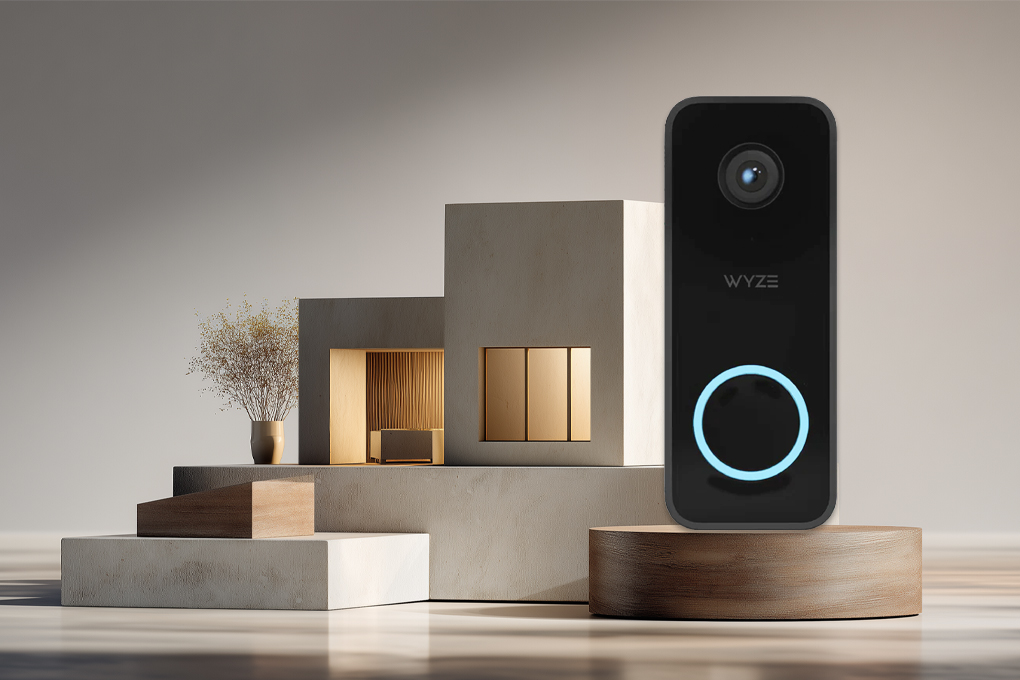Home safety devices are often overlooked until they’re desperately needed. According to the National Fire Protection Association (NFPA), U.S. fire departments respond to a home fire every 93 seconds, with these incidents causing approximately 2,620 civilian deaths annually. Even more concerning, the CDC reports that over 400 Americans die each year from unintentional carbon monoxide poisoning, with more than 100,000 visiting emergency rooms due to CO exposure.
These sobering statistics highlight why proper placement and sufficient quantities of smoke and carbon monoxide detectors are crucial safety measures for every home. Yet a 2022 NFPA survey found that while 96% of homes have at least one smoke alarm, only 42% have the recommended number of detectors properly installed throughout their residence.
Understanding exactly how many detectors you need—and where to place them—can mean the difference between early warning and tragedy. Fire and carbon monoxide threats require different detection approaches, as smoke rises while carbon monoxide disperses evenly throughout a space.
This comprehensive guide will help you determine the right number of detectors for your specific home layout, explain proper placement for maximum effectiveness, and outline maintenance requirements to ensure these vital safety devices function when you need them most.
Table of Contents
Prevent Injury and Death with Detectors
Did you know that having a functioning smoke detector reduces the risk of death in a house fire by 55%? In 2023 alone, the National Fire Protection Association (NFPA) reported that over 346,800 house fires occurred in the U.S., leading to 2,620 deaths. When it comes to carbon monoxide, a functioning device can help prevent the 400 deaths and 50,000 emergency room visits that happen annually due to CO poisoning in the U.S. Despite these statistics, it can be challenging for homeowners to know how many detectors they need and where to place them for optimal protection.

Types of Smoke and Carbon Monoxide Detectors
Understanding the different types of detectors available can help you choose the best protection for your home.
Smoke Detectors:
- Ionization Detectors: These detectors excel at detecting fast-flaming fires. They use a small amount of radioactive material to ionize the air, detecting smoke particles when they enter the detector. Ionization detectors respond faster to flaming fires but may be slower to detect smoldering fires.
- Photoelectric Detectors: Better at detecting smoldering fires, photoelectric detectors use a light source and a sensor. When smoke particles enter, they scatter the light, which is detected by the sensor, triggering the alarm. These detectors are less prone to false alarms from cooking or steam.
- Dual-Sensor Detectors: Combining both ionization and photoelectric technologies, these detectors offer comprehensive protection against both fast-flaming and smoldering fires, making them a great choice for full home coverage.
Carbon Monoxide Detectors:
- Electrochemical Sensors: These are the most reliable for detecting CO, providing accurate readings through chemical reactions. They are widely recommended for their precision in detecting harmful levels of CO.
- Biometric Sensors: Less common, these sensors change color when exposed to carbon monoxide. While useful for visual alerts, they aren’t as reliable for continuous monitoring as electrochemical sensors.
- Digital Display Detectors: These detectors show carbon monoxide levels in real-time, measured in parts per million (ppm). They allow homeowners to monitor levels over time and are often combined with smoke detection for added safety.

Smoke Detectors Placement
- Install smoke detectors inside every bedroom and outside each sleeping area. Ensure there’s at least one detector on every level of your home, including the basement.
- Mount smoke detectors high on walls or ceilings, as smoke rises. Place them at least 10 feet away from cooking appliances to reduce false alarms.
- Consider dual-sensor smoke alarms for the best protection against both flaming and smoldering fires.
- Test smoke alarms monthly and replace batteries at least once a year. Replace the smoke alarms themselves every 10 years.

Carbon Monoxide Detectors Placement
- Install at least one CO detector on every level of your home, especially near sleeping areas.
- Place detectors near bedrooms and living areas, and ensure there’s one near any fuel-burning appliances or attached garages.
- Follow local regulations, which may mandate specific placements and the number of detectors.
Frequently Asked Questions
Q: How many smoke detectors are required in a home?
A: It’s recommended to install smoke detectors inside every bedroom, outside sleeping areas, and on every level of your home, including the basement. This ensures comprehensive fire detection.
Q: Where should I place carbon monoxide detectors?
A: Place CO detectors on every level of your home, focusing on areas near sleeping spaces and fuel-burning appliances. Avoid installing them in humid areas or near windows, as this could interfere with readings.
Q: How often should I test my detectors?
A: You should test your smoke and CO detectors at least once a month to ensure they’re functioning properly. Regular testing ensures that these life-saving devices work when you need them.
Q: Do I need interconnected detectors?
A: Yes, interconnected detectors are ideal because if one alarm detects smoke or CO, all alarms will sound, providing a faster and more comprehensive alert system.
Q: How should I maintain my detectors?
A: Besides monthly testing, change the batteries in your smoke and CO detectors at least twice a year. Clean them regularly to ensure dust or debris doesn’t interfere with their operation. Most importantly, replace the units as recommended, generally every 7–10 years.
Maintenance and Testing
Regular maintenance and testing of your smoke and CO detectors are essential to ensure they function when you need them most.
- Testing: Test all detectors monthly by pressing the test button until the alarm sounds.
- Battery Replacement: Replace the batteries in your detectors twice a year, or when the low-battery warning chirps.
- Device Replacement: Smoke detectors should be replaced every 10 years, and CO detectors every 7 years or per manufacturer recommendations.
- Cleaning: Keep detectors clean by vacuuming them with a soft brush to remove dust or debris.
Conclusion: Protecting What Matters Most
The statistics are clear and compelling—proper detector placement saves lives. With home fires occurring every 93 seconds and carbon monoxide claiming over 400 lives annually, the small investment in adequate detection devices delivers immeasurable returns in safety and peace of mind.
Following the NFPA guidelines for detector placement isn’t simply about meeting minimum safety standards—it’s about creating multiple layers of protection for your most valuable assets: your loved ones and your home. Each bedroom, hallway, and level presents unique risks requiring specific detection coverage.
Remember these critical takeaways:
- Smoke detectors belong in every bedroom, outside each sleeping area, and on every level
- CO detectors should be installed on each floor, particularly near sleeping areas and fuel-burning appliances
- Dual-sensor and interconnected devices provide superior protection
- Monthly testing and semi-annual battery replacement ensure operational readiness
- Devices have limited lifespans—replace smoke detectors every 10 years and CO detectors every 7 years
With advancing technology, today’s smart detection systems can provide alerts directly to your phone and integrate with comprehensive home security, offering additional protection when you’re away. These connected solutions represent the future of home safety, providing enhanced monitoring capabilities beyond traditional standalone units.
Don’t wait for tragedy to highlight safety gaps in your home. Take time today to evaluate your detector coverage, replace aging units, and ensure proper placement throughout your living spaces. When seconds matter most during an emergency, having the right number of properly functioning detectors can make all the difference.



